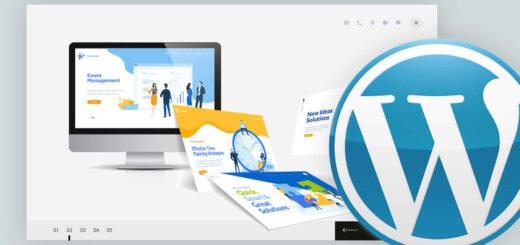Wix to WordPress: A step by step guide to migration
There has been a recent hype about Wix, a high-end website creator for small and medium businesses. All the templates, attractive themes, spot-on effectiveness and convenient user-friendliness of Wix is good enough for most website designers. But sooner or later, the individual realizes the limitations that Wix imposes. Many features that prove to be necessary and extremely valuable will need you to spend a considerable amount of money. Thus, when you grow, you will inevitably have to convert a website to WordPress.

wix to wordpress
WordPress is the most powerful CMS for website creators on the internet and approximately one-third of all websites are powered by WordPress.
There are 3 options for these website owners:
- The first one is a service known as WordHerd, an official partner of Kinsta.
- The second option is an automated plugin to migrate from Wix to WordPress, all it takes is 15 to 20 minutes to complete the process.
- The third option is to import your content from Wix to WordPress via the RSS feed of your Wix website. All methods are simple, easy and efficient to perform.
However, we shall focus on the 3rd option as this gives users some knowledge for possible future
website conversions too.
Step 1 –Set up your WordPress web hosting account. Ideally, you can opt for Bluehost as they already have a long-standing partnership with WordPress. Also, choose a domain name for users to
use to visit your website.
Step 2 – Now is a good time to begin setting up your brand-new WordPress website. As long as you choose Bluehost as your web hosting account, you would automatically get WordPress downloaded on your PC and you can access your dashboard via your login credentials. First and foremost, enable and set your permalink settings to ensure that the link seems more relevant to prospective website visitors. You can access the permalinks option by clicking on Settings on your WordPress dashboard.
Step 3 – Up next, you can begin to formulate or design how you want your website to look. This usually varies for different industries. Many people opt for WordPress experts for this task, but in reality, even basic knowledge of WordPress’s CMS can suffice in helping you choose themes, place widgets, modify tabs, include animation, information gathering techniques, choose your header and footers, background colors, color combination, etc. WordPress also gives its users access to premium themes than can be accessed by paying a small amount.
Step 4 – Now that your WordPress website is up and running. It’s time to transfer your blog posts from Wix to WordPress. The very first thing you need to do is download your Wix RSS file. Simply add /feed.xml or /blog-feed.xml to the end of your website URL. If you have not paid for a custom domain name, then use this link – username.wixsite.com/blogname/feed.xml. Provided you performed the actions correctly, you would arrive on a page of complex code. Right-click and save the file.
Step 5 – Go back to your WordPress dashboard and navigate to the import option under the tools section. Click on install now near the RSS tab, after which a pop-up button will appear stating ‘Run Importer’. Click on that and upload the file. Once the process is complete, double-check if all posts were imported by checking the all posts section under your dashboard.
Step 6 – The blogs are transferred but the images are yet under the authority of Wix. Simply download a plugin called the Auto Upload Images plugin. Once activated, you need to access the all posts tab under the dashboard and click on ‘Screen Options’ on the right top corner. Saving each image can be troublesome, thus you increase the quantity to 999 for ‘Number of items per page field’ and select the edit option, followed by the apply option. Click on update and all your images would appear along with your blog posts too.
Step 7 –Now you can transfer all your Wix pages to WordPress. Sadly when converting your website to WordPress, you have to copy the content (except page titles) from each of your Wix webpages and paste it in the section that arrives when you try adding a new page from your WordPress dashboard. Once your done making necessary edits and modifications to your page, simply click on publish. Keep in mind that this process doesn’t apply for your ‘contact me’ pages. Install a contact form plugin for this.
Step 8 –After successfully transferring all your written and visual content and all the pages from your
Wix website to your new WordPress website, it would be a wise choice to set up a menu so that people can easily navigate themselves on your new website. On your WordPress dashboard, click on Appearances and then Menus (also add a name). You can choose which of your converted pages do you want to appear in your main menu. Click on add to the menu to perform the action. In the end, click on the save menu (blue button).
Step 9 – This is the last and most critical step to ensure that your website users can access your new
website with a hassle-free redirection experience. Sadly, users can only be redirected to your new
WordPress website if you have a custom domain name. You will need to add 3 lines of code (along
with the rest of the code mentioned below) in a systematical order to your plain text editor –
var hashesarr = {
"#!about-us/c1it7":'/about/',
"#!contact/ce54":'/contact/',
"#!random-article/c1mz":'/random-article/'
};
for (var hash in hashesarr) {
var patt = new RegExp(hash);
if (window.location.hash.match(patt) !== null) {
window.location.href = hashesarr[hash];
}
}Also, make sure that your website visitors are aware of this change in URL. The overall conversion process can seem tedious but it simplifies future usage of WordPress features to a great extent. Time, costs and efforts are all saved in great amounts.



